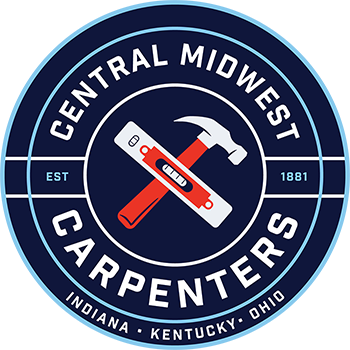NOTICIAS
HOT ITEM


Recent News
 2024 Indiana Kentucky Graduate Speaker – Kyle Harveymarzo 28, 2025 - 1:49 pm
2024 Indiana Kentucky Graduate Speaker – Kyle Harveymarzo 28, 2025 - 1:49 pm Military Outreach Makes Big Impactmarzo 24, 2025 - 3:29 pm
Military Outreach Makes Big Impactmarzo 24, 2025 - 3:29 pm 2025 Central Midwest Sisterhood Updatemarzo 3, 2025 - 5:13 pm
2025 Central Midwest Sisterhood Updatemarzo 3, 2025 - 5:13 pm Craft Spotlight – Justin Rogersfebrero 26, 2025 - 4:44 pm
Craft Spotlight – Justin Rogersfebrero 26, 2025 - 4:44 pm Ohio’s Newest Journey-Level Carpenters: Class of 2025febrero 25, 2025 - 12:55 pm
Ohio’s Newest Journey-Level Carpenters: Class of 2025febrero 25, 2025 - 12:55 pm Craft Spotlight – Brandon Huffmanfebrero 19, 2025 - 3:26 pm
Craft Spotlight – Brandon Huffmanfebrero 19, 2025 - 3:26 pm Craft Spotlight – Ron Heimelfebrero 5, 2025 - 5:14 pm
Craft Spotlight – Ron Heimelfebrero 5, 2025 - 5:14 pm


Carpenters advocate for hands-on educational opportunities in schools
/0 Comentarios/en News /por IKORCCLEBANON, Ind. – Earlier this month, Indiana/Kentucky/Ohio Regional Council of Carpenters (IKORCC) training director, Todd Pancake, was a featured presenter at an Elevating Work & Learn in Indiana event at Lebanon High School. Pancake gave an overview of the IKORCC apprenticeship program.
“It was a great honor to be invited to speak at the event,” said Pancake. Among others, both Governor Mike Pence and Lieutenant Governor Sue Ellspermann addressed attendees.
Elevating Work & Learn in Indiana targets residents in Indiana in an effort to educate them on potential career opportunities. It encourages schools, businesses and educators to create and identify opportunities to expose individuals seeking employment to viable work environments.
During his presentation, Pancake discussed the model of the IKORCC apprenticeship as a great example of a “work and learn” environment that fuels the pipeline for “high-wage, high-demand” careers in the construction industry.
“Our apprenticeship program,” said Pancake, “has so much to offer in terms of being a great model of how to marry classroom training with real on-the-job experiences. We are thrilled to share with others what we are doing.”
Fourth year carpenter apprentice, Kraig Bergman, shared the value the apprenticeship program has had on his ongoing career.
“We are so grateful for the opportunity to increase work and learn opportunities throughout the state for future generations through our partnerships with the Indiana Career Council and Works Councils,” said IKORCC member and Indiana Region 6 Works Council member Tim Conley.
For more detailed information, please contact Tim Conley at tconley@ikorcc.com
Carpenters Union Hosts Food Drive for Local Pantry Just in Time for Thanksgiving
/0 Comentarios/en News /por IKORCCLA PORTE, Ind.- Last month, Carpenters from the The Indiana/Kentucky/Ohio Regional Council of Carpenters (IKORCC) Local 1485 donated food, toiletries and other essentials to the Center Township Food Pantry & Resource Center. The Resource Center is coordinated by LaPorte’s trustee Lisa Pierzakowski.
Volunteers from We Stand joined Local 1485 for the food drive. We Stand is an organization consisting of spouses and companions of Local 1485 carpenters who develop different ways to give back to the community. “Resource centers do a lot of good for their communities as do local carpenters. We realize you have to build up the entire community not just certain sectors,” said We Stand Representative Angela Carr. “This resource center wants to improve the economic situation by putting local citizens to work, which drives us to help them more.”
We Stand members and Local 1485 Carpenters reached out to local grocery stores to promote and set up drop off sites for people to donate food and toiletry items for the pantry. In mid-September, they hosted the weekend-long food drive at La Porte Al’s Supermarket locations and the La Porte Savings Bank.
They also reached out to their locals members who contributed items at their bi-monthly meetings. In addition to the items and food donated, Local 1485 and We Stand presented the food panty with a check for $1,000. Carr added, “Holidays can be especially difficult for some families, so we were excited to take part in this food drive.”
For more information, please contact John Carr jcarr@ikorcc.com
Carpenters Union Builds Santa’s Sleigh for Holiday Parade
/0 Comentarios/en News /por IKORCCCLEVELAND, Ohio – Earlier this month, Carpenters from the Indiana/Kentucky/Ohio Regional Council of Carpenters (IKORCC) Local 435 Member Action Committee (MAC) volunteered to build Santa’s sleigh for the Light Up Lorain Waterfront Winterfest parade.
To kick off the Christmas season, Light Up Lorain Waterfront Winterfest is an annual two- day celebration held in Lorain that includes a lighting ceremony at Veterans Park, visits with Santa at Mrs. Claus’ Kitchen and an annual parade on Broadway and West Erie Avenue. This year, the celebration will be held on Nov. 28 and 29.
Director of the Lorain Port Authority Stephen W. Bansek was thrilled to accept the donation of the Santa sleigh that was designed, constructed and painted by the Carpenters Union. “We could not be happier for their help. Our community looks forward to the fest every year. We are thankful for all who made this possible, specifically Local 435 carpenters, John Muriello and Loren Haskins.”
Upon completion of the sleigh, Santa and Mrs. Claus visited Muriello and Haskins to inspect their work. Luckily, they passed with flying colors and were told the craftsmanship and kind heartedness of the IKORCC volunteers should make carpenters proud from all over. All four sides of the sleigh will proudly display an IKORCC “carpenters making a difference” sign.
IKORCC Representative Kevin Ennis said, “Having the opportunity to give back to the community and knowing how excited the kids will be to see Santa on his sleigh will make this year’s parade even more special to us.”
For more information, please contact Kevin Ennis kennis@ikorcc.com.
Local Carpenters Reroof House for Family in Need
/0 Comentarios/en News /por IKORCCPARMA, Ohio – This past summer, members of the Indiana/Kentucky/Ohio Regional Council of Carpenters (IKORCC) from Locals 435 and 373 donated their time to help a local family with necessary home repairs.
When the McCarthy family reached out to the carpenters union, Locals 435 & 373 didn’t hesitate to volunteer. The McCarthys have four children, one of them was born with Cerebral Palsy. With mounting medical bills, the loss of Mr. McCarthy’s job, and round the clock care needed for their son, the family was unable to pay for a new roof for their home.
Materials were generously donated by local contractors, and the labor was provided by a collaborative effort between Cleveland Building Trades and Carpenters Locals 435 and 373.
Kevin Ennis, Dustin Basmagy, James Gamier, Jeremy Kuhar and Megan Walkowisk of Local 435 joined Kyle Smith, Eric Dunn, John Mills of Local 373 for the project. Jack Petsche from USA Roofing was the contractor on the project.
For more information, please contact Kevin Ennis kennis@.com
Local Carpenters Volunteer in Home Construction for Wounded Soldier
/0 Comentarios/en News /por IKORCCANDERSON, Ind. – Over the past year, Homes for Hoosier Heroes and various local trades, including carpenters, millwrights and floor coverers of the Indiana/Kentucky/Ohio Regional Council of Carpenters (IKORCC) have been working on building a handicap- accessible home for former Army infantryman Timothy Frank Senkowski.
Senkowski was severely injured by an improvised explosive device in Afghanistan, resulting in the loss of both of his legs.
Last month, Tim Thieme of Floor Coverers Local 364 was contacted by Chuck Gowan and Mike Brooks, pipe fitters who are involved in the project. Gowan and Brooks were in need of contractors wiling to lay flooring in Senkowski’s home. Thieme quickly agreed to help and reached out to Superior Carpet Installers of Indianapolis, who without hesitation jumped on board.
All of the underlayment was generously donated by Southland Flooring Supply. The vinyl plank and carpet was provided by Mohawk for a minuscule charge.
Local 364 floor coverers who volunteered for the project include Adam Williams (Floor Covering Instructor), Marty Brinson and Kelsey Biggs of Superior Carpet Installers, Wes Simpson and Chris Rainer of Blakley’s Flooring.
“As we were working on his home, Senkowski stopped by to visit. Every single installer walked over to him and shook his hand, thanking him for his service,” commented Thieme. “Knowing that we’re giving back to someone who has dedicated his entire life for our country and our freedom makes it all worthwhile.”
“Sacrifice…that’s what it’s all about. Whether it’s by donating a few hours to help a brother out or spending a weekend to positively impact the lives of our nation’s heroes,” commented Wes Simpson of Local 364. “The brotherhood of unions and veterans will always be there on the front lines to fight for what’s right. I was honored to help someone who sacrificed it all for our freedom.”
For more information, please contact Tim Thieme at tthieme@ikorcc.com